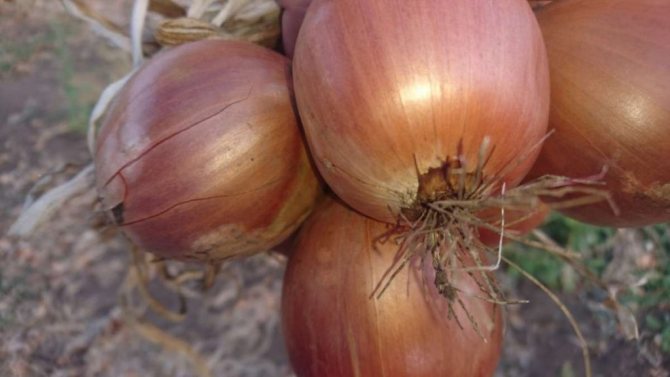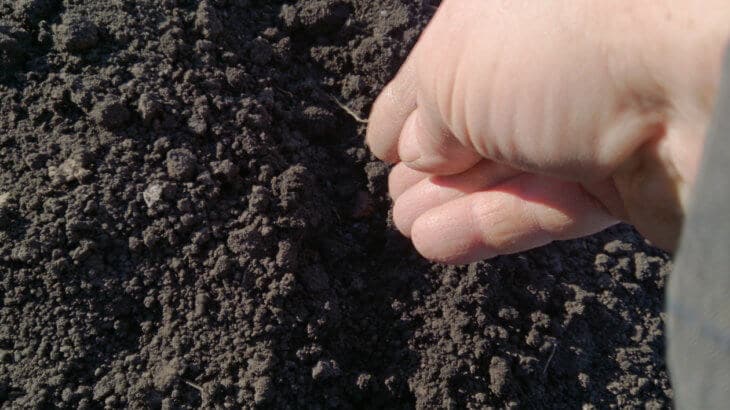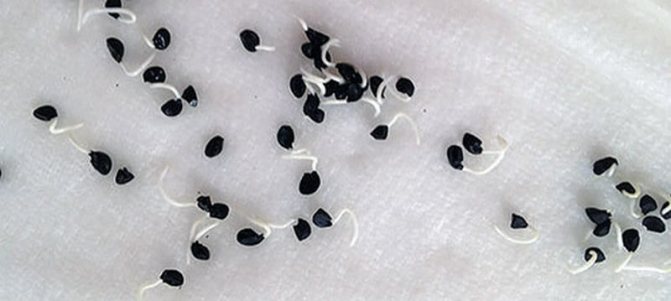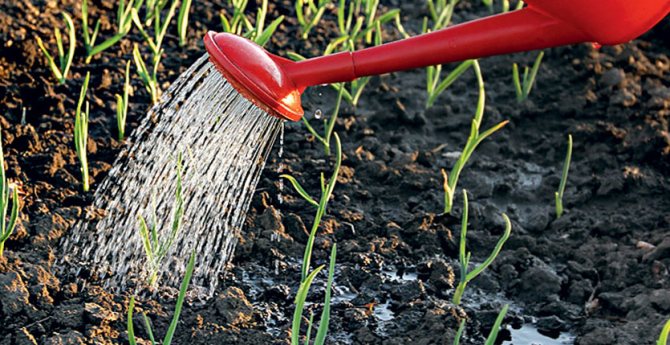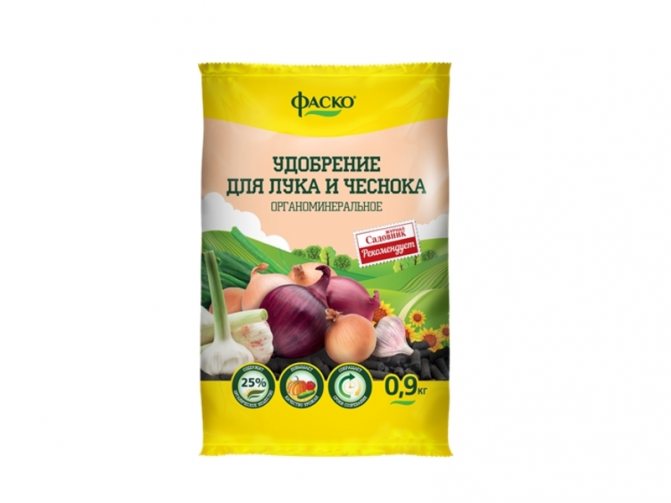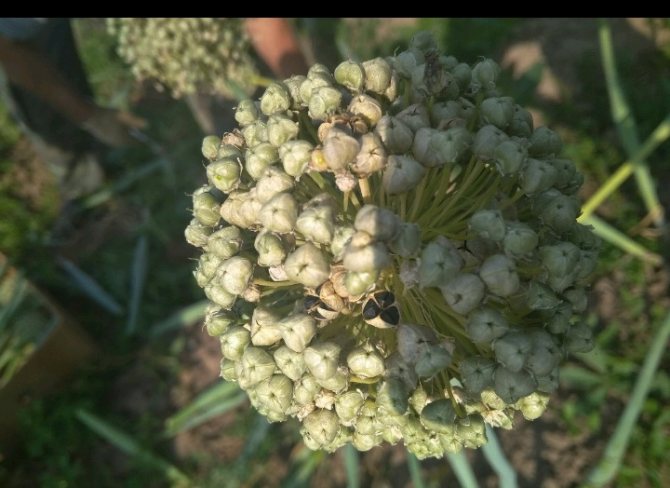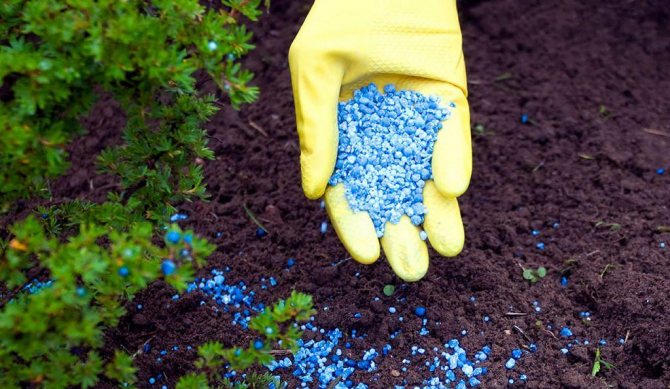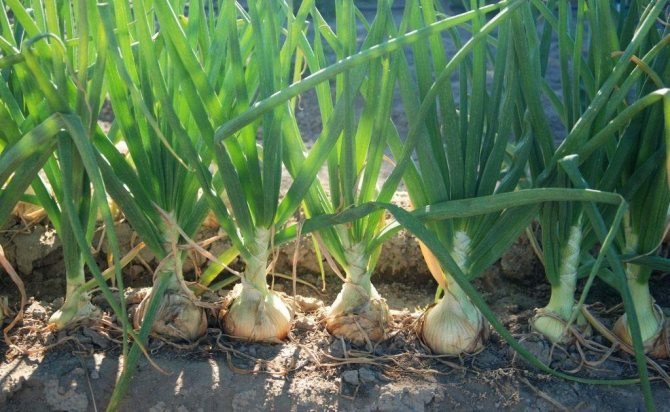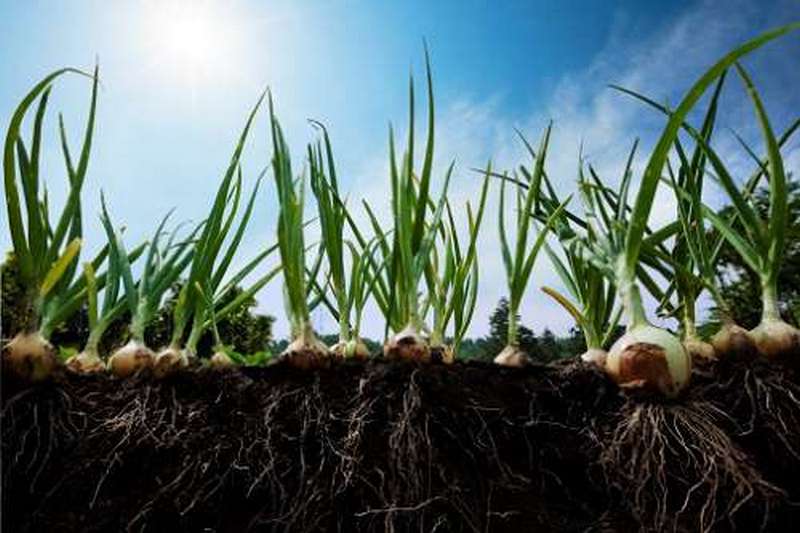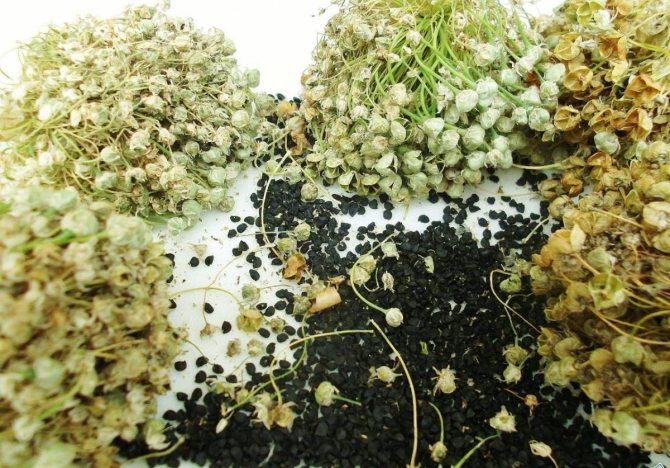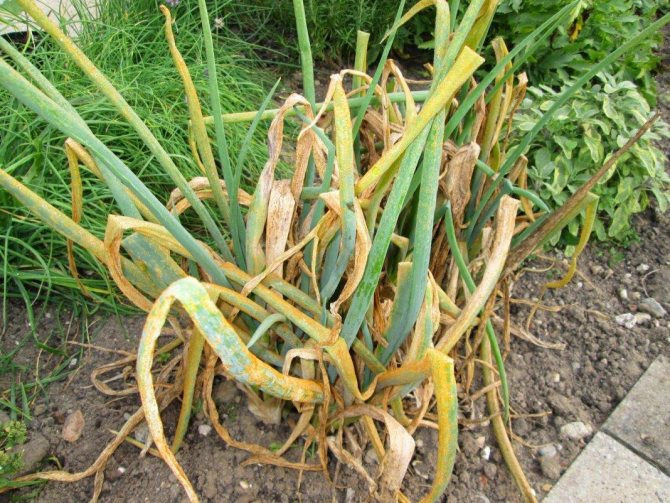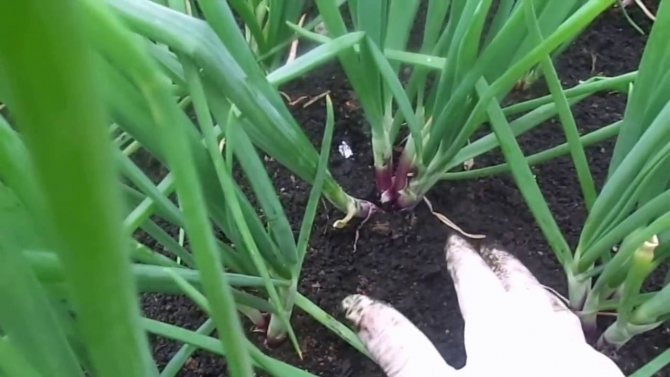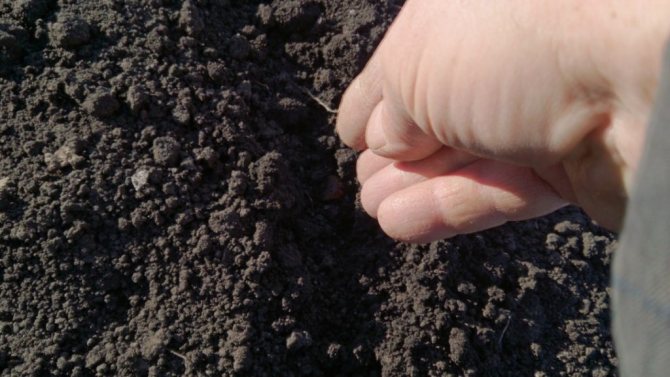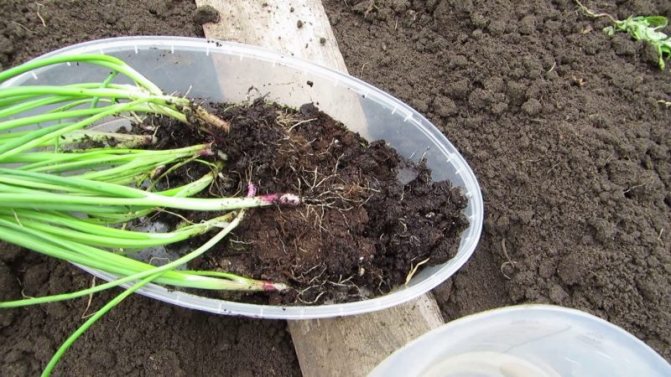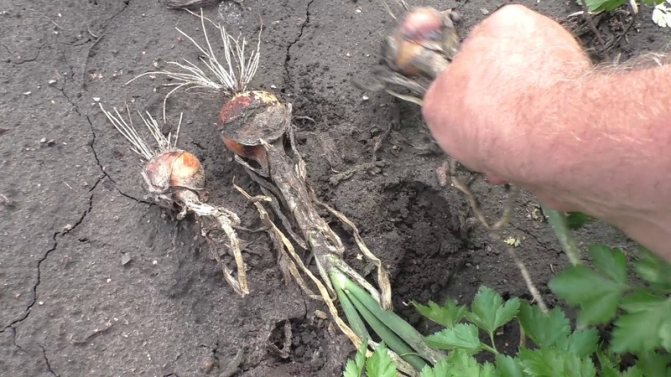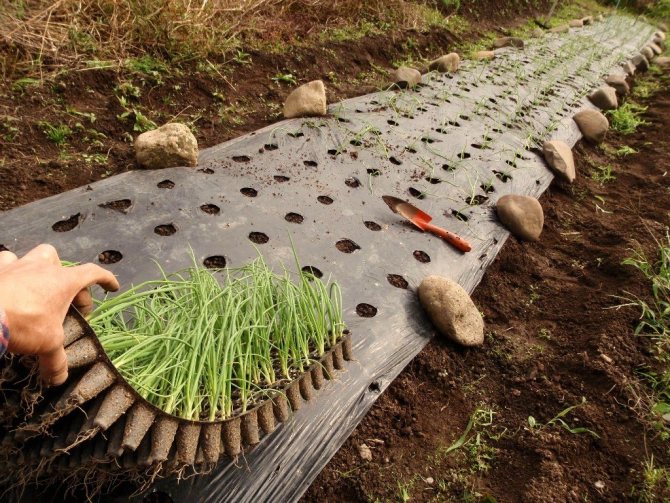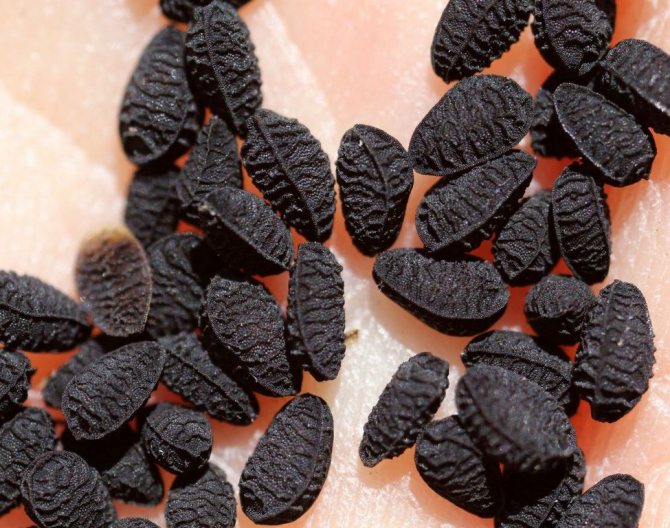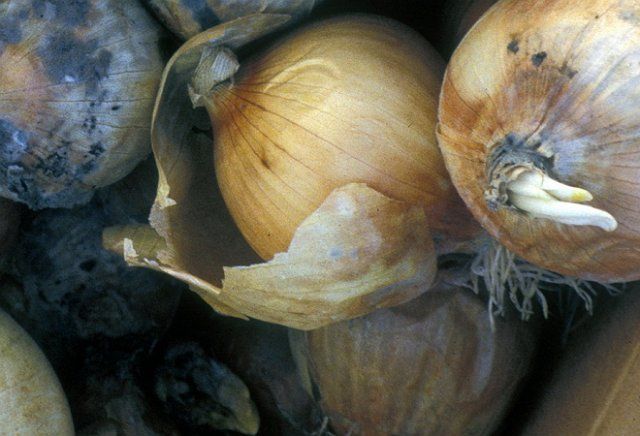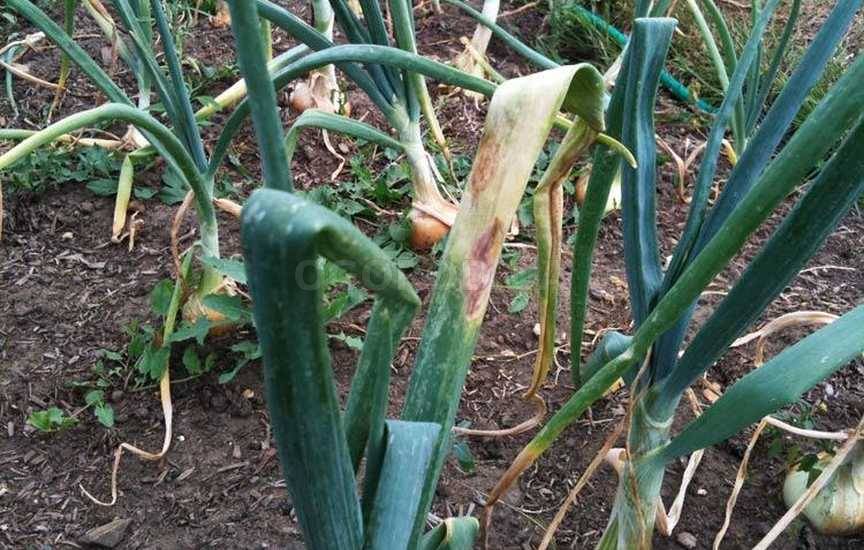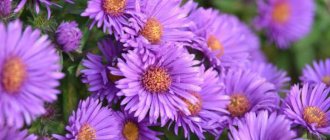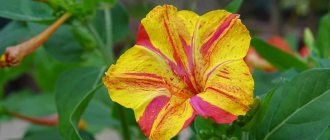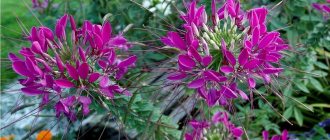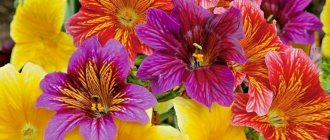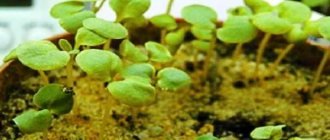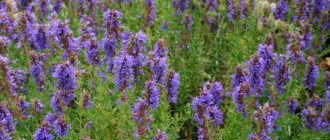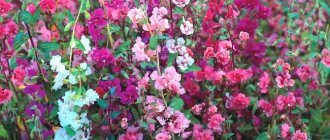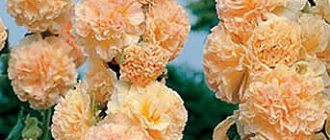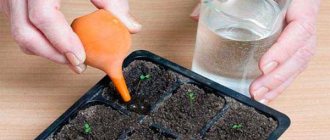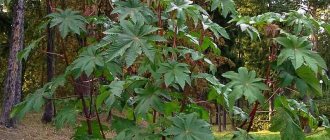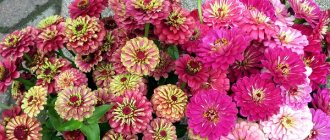Author rating
The author of the article
Yakov Pavlovich
Professor, Head of the Department of Vegetable Growing
Articles written
153
Many gardeners sooner or later think about whether it is possible to grow onions from seeds. This practice has existed for a long time. At least once in his life, every owner of a garden plot tried to plant a black onion. For people who are far from the topic, it may seem that we are talking about a variety or type of culture. In fact, this is the name of the seeds of a bulbous plant. Therefore, we further propose to find out how the cultivation of nigella onions from seeds occurs.
Plant in spring and autumn
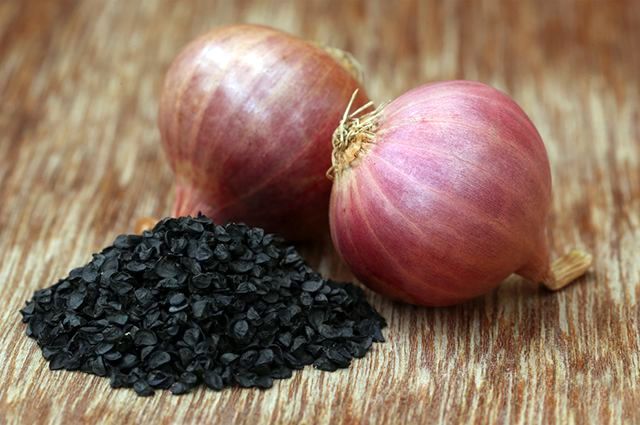
Seed material for subsequent planting can be obtained from just 2 bulbs.
Description of the species:
- Nigella Are seedsthat form in the arrows of last year's bulbs for growing seed and grocery onions. To obtain planting material, it is necessary to choose the right variety.
- Seeds ripen in flower boxes. An adult bulb throws out an arrow up to 1 m high, on which a spherical inflorescence of white or pink is formed. As the flowers bloom, seed pods are formed in place of small flowers, at first green, then they turn brown.
- It is recommended to collect seeds when the pods turn brown. To do this, cut off the arrows and place them in a ventilated, covered area for ripening. When the heads are completely dry, they should be shaken vigorously to allow the seeds to spill out.
- Store seed in glass jars. or paper bags in a dry, ventilated area for up to 2 years. The seeds contain a sufficient amount of fat, so they get oil, which is used for medicinal purposes.
- To obtain bulbs, nigella is sown both before winter and in spring. Moreover, planting is carried out both by direct sowing in open ground and by grown seedlings.
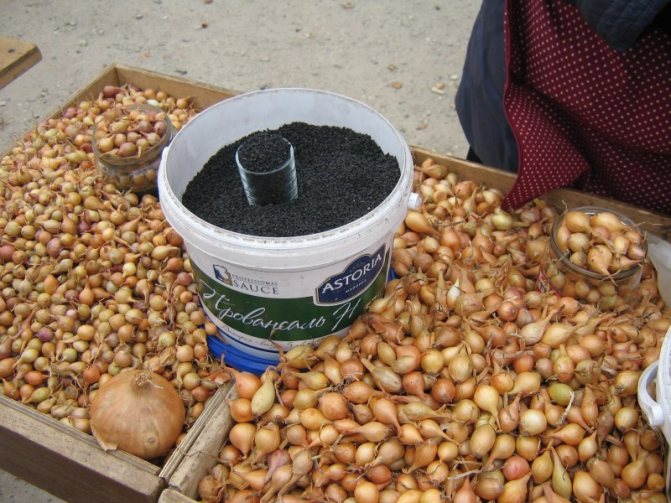

A sowing clove is obtained from the seeds for obtaining grocery onions. Photo: The author of the video recommends soaking onion seeds in hot water with Epin before planting. Sow seeds thickened to obtain fresh herbs and planting material:
Planting seedlings: how to sow, after how many days does it sprout?
Is it possible to plant nigella for seedlings and after how many days shoots appear, you will find out further. Seedling method helps to get early harvests... Seeds sown in advance allow, by the time of planting, to receive already grown plants on which bulbs begin to form. Next, you can find out how long the onion sprouts.
It is possible to grow seedlings only from nigella of those varieties for which the germination period is 120-140 days.
The main seedlings are formed after about 14 days. And the first ones may appear earlier.
It is convenient to sow seeds in special plastic containers.which sizes vary according to preference. They have sealed transparent lids.
In the absence of a container, any empty container will do:
- a plastic bottle cut lengthwise;
- drawers;
- seedling cassettes;
- flower pot;
- plastic cup.
Step by step instructions: how to grow in a snail?
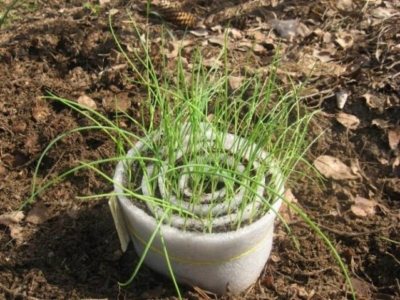

Not every gardener knows how to grow nigella "snail".The planting process in this way and further care takes a lot of time, so experienced gardeners use it.
What you need:
- laminate backing;
- rubber;
- toilet paper;
- plastic bag.
How to plant seedlings correctly:
- Cut strips of 20 * 30 centimeters from the laminate backing.
- Lay a layer of toilet paper on top and sprinkle it abundantly with water from a spray bottle.
- Retreat 2 centimeters from the lower edge of the strip and spread the seed nigella, observing an interval of 1-2 centimeters.
- Fold the workpiece into a roll and secure with an elastic band.
- Place the snail in a bag and place in a warm place.
- After 14 days, carefully unfold the structure and sprinkle the seeds with loose earth.
- Spray with water and place in a tray.
The "snail" must be stored in a bright and warm place, and also to monitor the moisture content of the earth.
How to sow in a glass correctly?
Planting seed in a glass is no different from growing in seed boxes. The basic rule is the transparency of the cups:
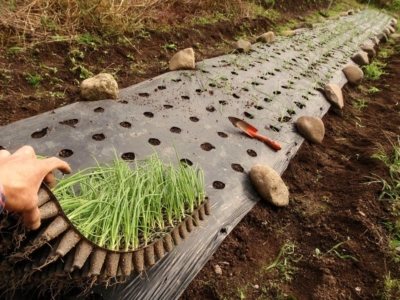

- Make drainage holes at the bottom of the containers.
- Add a 1 cm layer of sand.
- Then land, leaving 2 centimeters to the edge of the glass.
- Place 1 seed in each glass and sprinkle with earth.
- Drizzle with water from a tablespoon to moisten the earth.
Seedlings at the time of planting in the garden do not get sick and easily take root thanks to such sowing.
Water and feed in moderation
How to grow onions:
| Step 1. Watering
|
| Step 2. Top dressing
|
| Step 3. How to harvest
|
Sowing preparation
The preparatory stage consists in processing the seed and preparing the soil.
Planting material processing
Nigella seeds are disinfected before planting to protect against diseases and germinate to accelerate the emergence of shoots.
First, the seeds are poured into a tissue bag and soaked in water for several hours. Then they are immersed in a solution of potassium permanganate (0.1%) for 20-30 minutes. The treated seeds are washed with running water.
After that, germination is started. The seeds are transferred to a cloth moistened with a solution of "Epin" (1 drop per 200 ml) and soaked until the first roots appear. At the same time, they monitor all the time that the fabric does not dry out.
Soil preparation
The sowing area selected taking into account the predecessors is dug up and leveled. If in the previous season a lot of manure was introduced into the ground, then additional humus or compost is not added. As fertilizers, ready-made kits intended for bulbous crops are used.
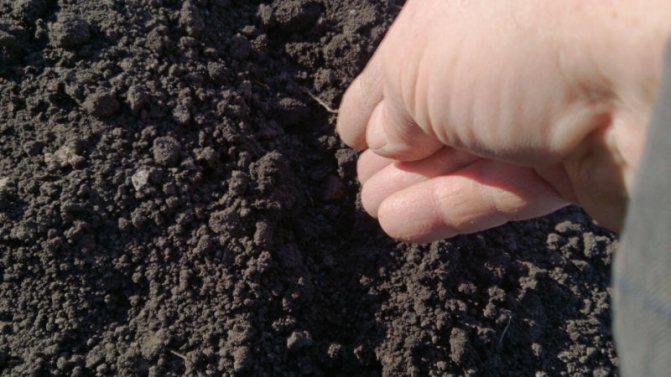

Why does not the onion rise
- Old seeds. If seeds are used for sowing after 2 years of storage, the germination rate may be less than 30%. Before planting, you should soak the seeds and wait for pecking, only then plant them.
- Insufficient watering, poor land. Onions are a moisture-loving culture, therefore, with a lack of moisture, the development of the head may stop. With insufficient nutrition, the seedlings weaken and dry out.
- Onion fly defeat. Onion fly larvae can cause great damage to the crop.To prevent its spread in the beds, dill, calendula or carrots should be planted next to the plantings. It is also recommended to water the beds with salted water.
Further care outdoors
Nigella care is negligible. Over time, activities such as watering, feeding, pest control, and the elimination of weed crops will be required.
Thinning thickened plantings
It is worth thinning the nigella as soon as the sprouts have arisen. There should be at least 2 cm between young plants. The culture is thinned a second time after 20 days and the distance should be 6 cm. This rule applies to those cases when it was planned to grow annual onions.
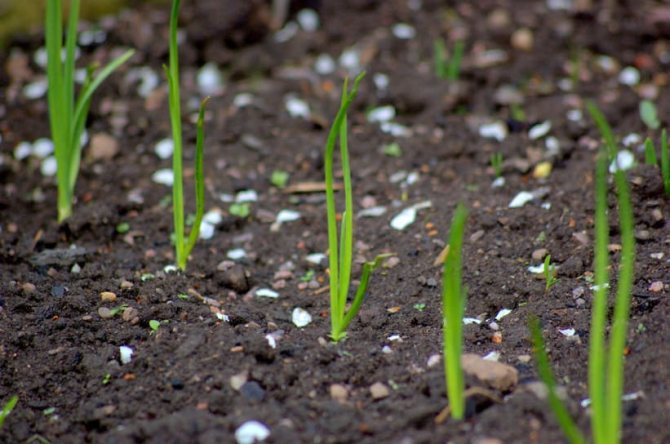

Expert opinion
Stanislav Pavlovich
Gardener with 17 years of experience and our expert
Ask a Question
Attention! You need to plant the sevok quite thickly, otherwise the gardener runs the risk of growing medium-sized bulbs.
Loosening and weeding of soil
At the moment of firm rooting of the culture, the soil is loosened between the rows. Onions have a small root system that is not able to fight for moisture and nutrients with weeds. Loosen the soil carefully, taking care not to damage the roots.
Effective weeding is possible with moist soil. You can remove weeds with a hoe or by hand.
Watering
As mentioned earlier, the roots of the culture are short, so onions can remain without water in dry soil earlier than other plants. If you do not water in a timely manner, the fruits will not grow to the desired size.
Watering the beds is carried out as the earth dries up. The best option in this case would be drip irrigation.
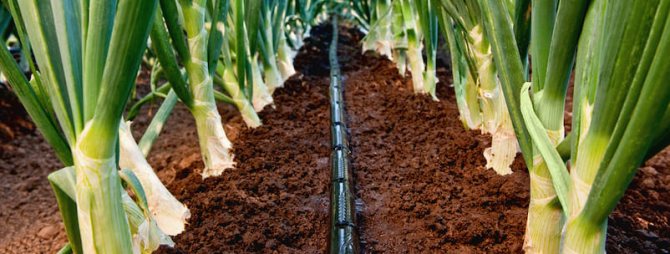

The garden is moistened in the morning, as in the daytime, under the rays of ultraviolet radiation, moisture instantly evaporates. In the evening, watering is not recommended, since the root system can rot due to prolonged contact with water.
Fertilizer
In the process of growing nigella, two dressings are carried out. The first is initiated at the stage when the plant has three green leaves. For feeding, take urea: for 10 liters of liquid - 1 tbsp. spoon of funds. It will not be superfluous to add potash fertilizer.
See also How to deal with an onion fly
When five leaves appear on the plant, a second feeding is carried out. This will require potassium monophosphate at the rate of 1 tbsp. spoon for 10 liters of liquid.
All dressings are carried out before the bulb is formed. The best option would be to use complex fertilizers.
Protection against diseases and pests
Most often, nigella is exposed to pests such as onion flies and nematodes.
When an onion fly attacks a crop, yellowing stems can be seen on the plants. A pest occurs when a dry and sunny climate is established. The insect itself has a gray tint and outwardly resembles an ordinary fly. The insect lays eggs in the stem, thereby damaging the plant. Young bulbs die, and old ones stop growing. To identify the pest, the plant is taken out of the soil and examined. The affected fruit is dug up and burned.
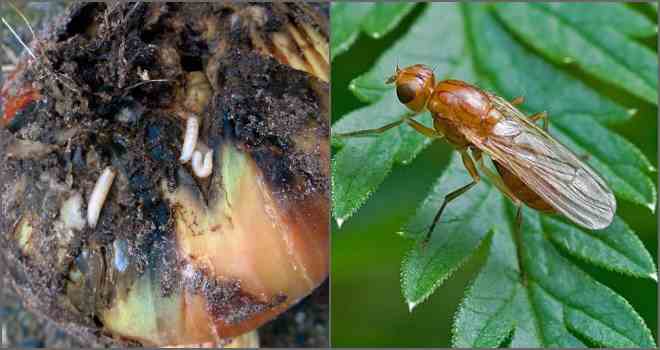

They fight the onion fly with the help of chemicals or folk remedies. Among the first, Aktar and Extraflor are popular. As a folk remedy, onion beds are watered with a salt mixture or kerosene.
Also, the culture is affected by nematodes. These are small worms that attack plants en masse. There are pests in the ground. The fact that nematodes attack onions can be understood by the putrid smell and deformation of the feathers. In order to prevent the beds, they are treated with pericalcite ameliorant. The event is held a week before the onion planting.
The most serious disease is called white rot, the spores of which remain in the ground for up to 7 years after harvesting damaged crops. The problem can be detected by the leaves: they become colorless, and a watery bloom appears on them.The disease develops in conditions of high humidity. The fungus is carried by the wind and can infect large areas within 7 days. For white rot, copper sulfate is used, with the addition of zinc and urea. The resulting solution is sprayed on the culture for prophylaxis before infection occurs.
The second no less dangerous disease is downy mildew. It can be recognized by the appearance of plaque or brown spots on the leaves. Feathers dry out over time. The fruits become soft and cannot be stored. The disease progresses in excessively damp beds. As a preventive measure, the culture is irrigated with a solution of Baikal Em-1 or Bordeaux liquid.
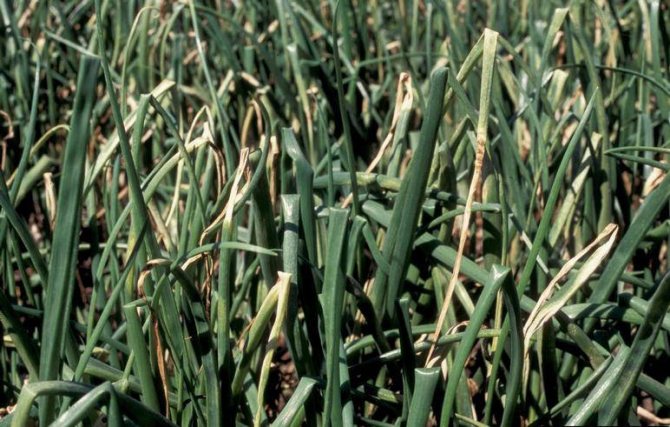

Diseases and pests
| Gray rot Ways to fight:
|
| Powdery mildew Ways to fight:
|
The best varieties
Among the mass of onion species suitable for making sets, the popular mid-season and late-ripening annuals are:
- Delight. The variety is classified as late-ripening annual hybrids. Produces large, bright yellow onions. Fruit weight reaches 150-300 g if sowing is carried out using seedlings. Differs in resistance to diseases and climatic conditions, suitable for long-term storage. The growing season is 130 to 140 days.
- Centaur. The variety is an annual mid-season hybrid capable of growing in unfavorable conditions. The collected plants are subject to long-term storage. The growing season is 90 to 110 days. Bulbs are dark yellow in color, round, weight - 100 g.
- Crimson ball. Large annual hybrid. The bulbs are dark purple in color. The taste is juicy and sweet. The feather is massive and strong. Fruit weight is 80-200 g. Suitable for fresh consumption. Vegetation period is 90 days.
See also Why onions turn yellow and what to do about it
Reviews of gardeners
Sandra, Tula
I poked decent plants with seedlings, almost the same thing as sticking a set, watered it and that's it, let it grow. The survival rate is close to 100%.
Alexander, Moscow
Every year we plant seedlings on a feather, and it grows before frost. Even somehow the bulb grows and goes away with it before winter. And next year - an arrow.
Winter cultivation
When to plant black onions for the winter? Sowing for winter cultivation is carried out in mid-August. By the onset of winter and the first snowfall, the plant has time to grow several green leaves, which will happily wait for spring under the snow cover. In the spring, look over the beds and remove any bulbs that have not survived the winter. The harvest will be possible in May. But this growing method is only suitable for regions with heavy snowfall. If the winter is rainy, the onions will simply rot in the ground.
Similar articles:
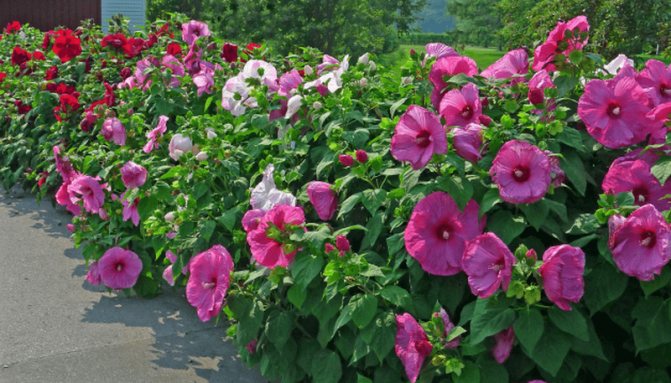

Herb hibiscus - planting and care features ...


Hyacinths - planting and care features
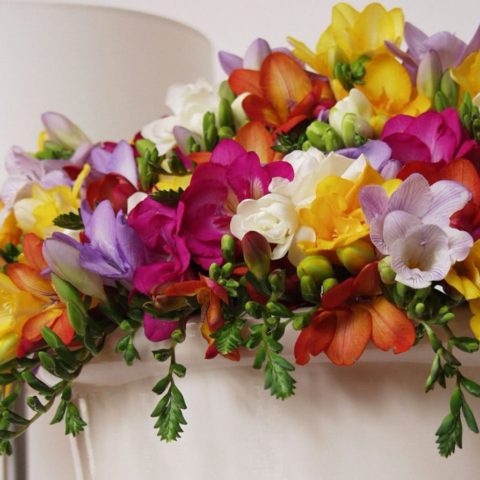

Freesia - photos of popular varieties, planting and care features
Harvesting
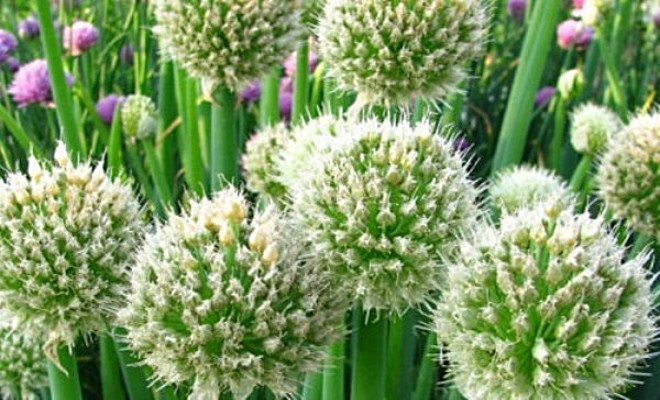

Many are interested in whether it is possible to collect nigella from the inflorescences of onion sets planted this year? This should not be done. Since you will not be able to collect onion seeds that will produce worthy offspring. Such inflorescences have a small number of seeds, and the onion heads grown from them are small. Onion seeds are harvested from specially planted large bulbs.
So when to harvest nigella onion seeds? The nigella should be removed when cracked bolls with ripe seeds appear in the onion seedlings in the umbrellas. The collection time depends on the weather conditions prevailing in a particular area (somewhere around the end of July - mid-August).
Planting dates for nigella - general rules
You can grow onions to get greens in different ways - plant them in the ground before winter or in spring. It is also permissible to remove the culture by the seedling method.
Many are interested in when to sow nigella for sevok. With the arrival of spring, it is planted after thawing the soil. It is recommended to start growing seedlings in February. In this case, already in April, the seedlings can be planted in the garden.
Before winter, onions are planted in slightly frozen soil. Due to this, the seeds will not have time to germinate during the fall.

